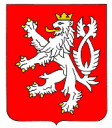According to the latest disbursement data released on 31 December 2006, all subsidies have been disbursed under various programs, including programs that concern the Czech capital Prague, where the danger that funds would have to be repaid existed until as late as last month. Subsidies allocated in the EU’s funds for 2004 have been used by the Czech Republic up to 160 %, and already now, the country is investing money allocated to the year 2005, which must be disbursed by the end of 2007).
„As regards the disbursement of EU funds, the situation was serious at the beginning of the fall, and we received some warnings from the European Commission to this effect. The longest delays existed in programs targeting human resources development, regional development, and development activities in the city of Prague. We had to implement crisis management of the entire system. Thanks to our timely intervention, we have succeeded in accelerating the administration of projects and payment demands, and we have improved communication with final beneficiaries as well as the flow of information between the individual organizations and departments that take part in the disbursement process,“ summarized the state of affairs Minister for Regional Development Petr Gandalovi? whose ministry acts as the national coordinator of all programs subsidized by the EU’s funds, regardless of whether they are supervised by the Ministry for Regional Development or other ministries.
„Had we not used subsidies allocated under the EU’s funds, we would have got into a very problematic situation. The money, which we need so much for regional and urban development, would have simply been forfeited. Fortunately, we no longer face this threat,“ said Gandalovi?.
 In the past two years, the Czech Republic has had the greatest success with the use of the EU’s funds in programs focusing on the construction and reconstruction of the transport and environmental protection infrastructure. The second most successful area was the operating program that targets agriculture and rural areas through investments into farming, support for small agricultural businesses, and the processing of agricultural production. The third best rating went to the operating program Industry and Business, and the regional development program (Joint Regional Operating Program) ended in the fourth place thanks to a significant increase in the disbursement of funds in the last three months of 2006.
In the past two years, the Czech Republic has had the greatest success with the use of the EU’s funds in programs focusing on the construction and reconstruction of the transport and environmental protection infrastructure. The second most successful area was the operating program that targets agriculture and rural areas through investments into farming, support for small agricultural businesses, and the processing of agricultural production. The third best rating went to the operating program Industry and Business, and the regional development program (Joint Regional Operating Program) ended in the fourth place thanks to a significant increase in the disbursement of funds in the last three months of 2006.
„The disbursement of funds allocated to 2004 has given a clear signal that the public administration, entrepreneurs, and the nonprofit sector in the Czech Republic have gradually learned to use subsidies from the EU’s funds. Their experience will be of key importance for drawing assistance in the new programming period, which has recently started and in which the Czech Republic will have access to a volume of European funds several times higher than the subsidies we have received in the past,“ added Gandalovi?.
Measures adopted with the aim of accelerating disbursement have proved successful in both the human resources development program and the programs that target the city of Prague. The situation in the Czech capital is somewhat more complicated, however, among others due to the fact that Prague is required to secure financial participation from other sources to an extent higher than entities taking part in other operating programs. „As to the programs intended for Prague, an applicant must secure one half of project costs from sources other than the EU, for example from the municipal budget, the state budget, or private investors.
Most other operating programs receive financing from the EU up to 75% of costs,“ explained Gandalovi?. Another reason for complications is the fact that disbursed funds are dispersed into a number of small projects, which, however, are as demanding from the administrative viewpoint as projects worth dozens of millions of crowns.
Nonetheless, in the last months of last year, the authorities responsible for disbursing subsidies under programs that target Prague (City of Prague, Ministry for Regional Development, and the Ministry for Labor and Social Affairs) succeeded in ensuring that all resources allocated for disbursement by the end of 2006 were used. The Czech capital receives subsidies from the EU under Single Programming Documents 2 and 3 (SPD 2 and SPD 3). Individual subsidies target the development of Prague’s boroughs, job creation, employee training, and support for research and development in various business fields.






